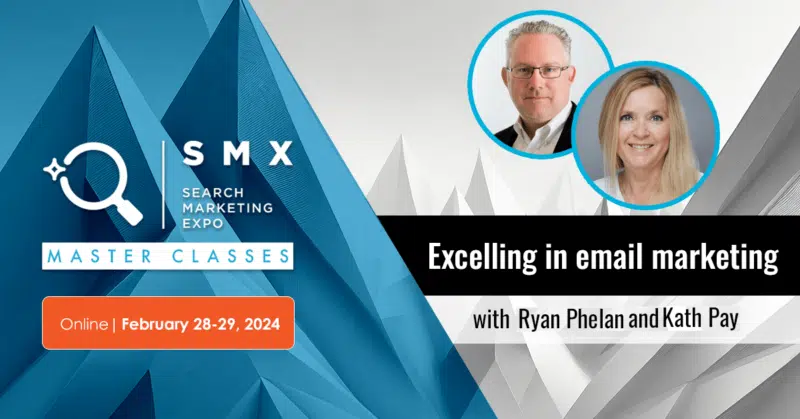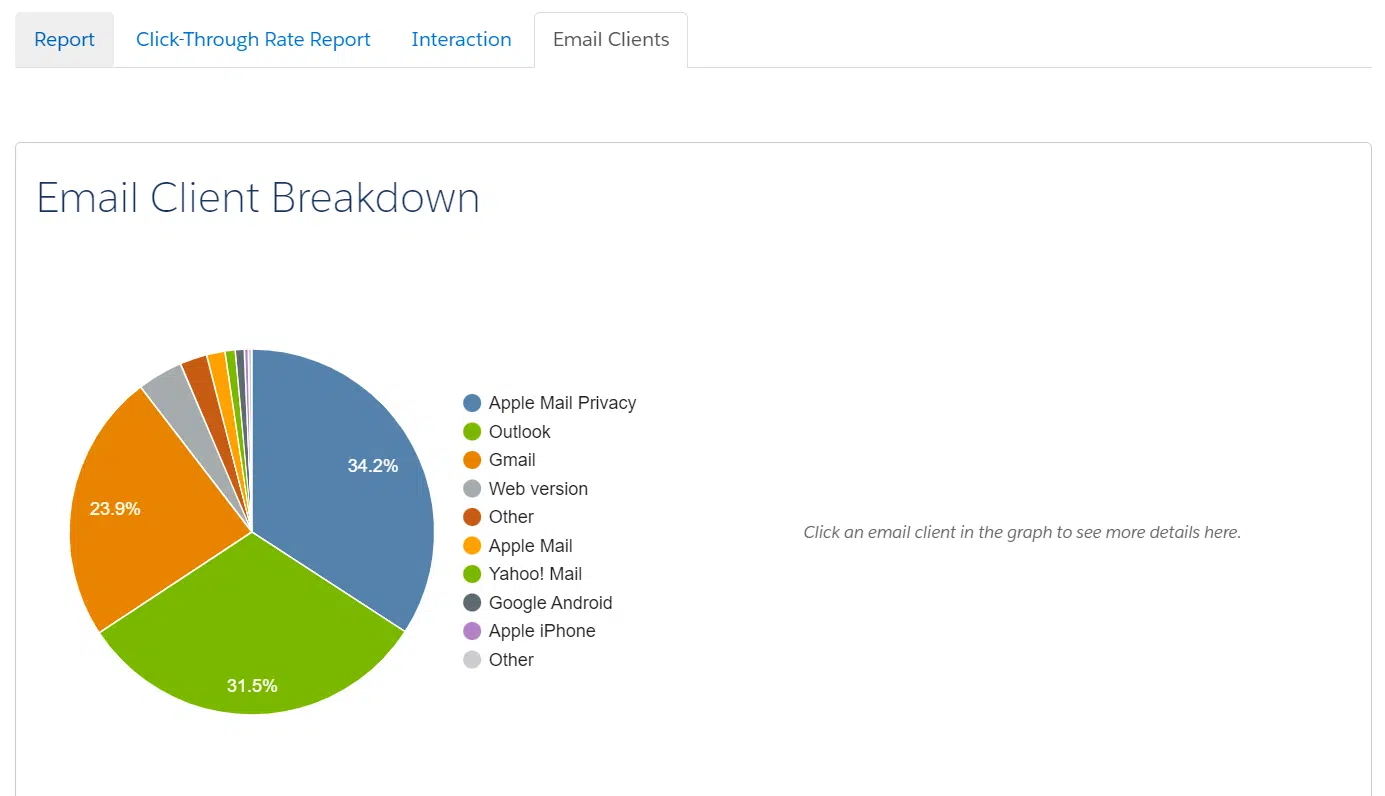It’s time to say goodbye to your email open rate
If your email strategy’s success is founded on clicks and opens, the data privacy landscape of the future could be an unpleasant awakening.
The data privacy landscape is changing rapidly, driven by legislation like GDPR and CPRA, plus consumer pressure on big tech companies. Marketers can no longer use personal data without restrictions. This affects not only digital advertisers but also email marketers.
Here’s how these changes impact email marketing, including open rates, and why measuring direct engagement is crucial for success.

Dig deeper: Email marketing is changing: Catch up with this Master Class
Privacy legislation, consumer pressure reshaping marketing
Since 2018, more than 75% of states have considered privacy legislation, and 10 have enacted comprehensive state privacy laws, with more passing privacy legislation as the year progresses.
The U.S. legislation isn’t quite as explicit in requiring email marketers’ opt-in consent as GDPR. Still, the explosion in U.S. laws means even marketers who only market within the U.S. and B2B marketers (yes, CPRA also applies to business contacts!) should be paying attention. These laws can impact your email marketing strategy in ways you might not realize.
It’s not just data privacy legislation that’s changing the game for email. In response to consumer calls, big tech companies like Google and Apple have also implemented platform- and consumer-side data privacy tools, like Google’s end of third-party cookie tracking and Apple’s Mail Privacy Protection.
Data privacy tools like these can impact your email strategy in unexpected ways:
- User-controlled features like Apple’s Mail Privacy Protection make it look like an email has more opens than it actually does.
- Security bots may inflate click rates in email reports.
- Your marketing automation platform might use third-party cookies to track visitors.
- Tools like DuckDuckGo’s email inbox may “hide” interactions from your marketing tools.
That’s a lot for any marketer to unpack in one article. Let’s stick to a key metric often used to report on email marketing successes: the email open rate.
Why your email open rate is (probably) not valid
If part of reporting on your email successes relies on email open rates, drop everything and jump into your marketing automation platform right now.
Depending if you’re a B2B or B2C marketer, the impact of privacy tools on your email open rates could include:
- Apple’s Mail Privacy Protection (likely for B2B and B2C)
- Outlook’s funny way of calculating opens (very likely for B2B)
- The emergence of DuckDuckGo’s privacy email inbox (not likely for B2B or B2C — yet)
First, you will want to investigate if your marketing automation platform has an out-of-the-box feature that allows you to see in a sent email report which email clients your recipients are using.
Here’s an example of one from Marketing Cloud Account Engagement (formerly Pardot), where you can clearly see the impact of both Apple Mail Privacy Protection and Outlook:

If your marketing automation platform offers this feature, you’ll want to look at several types of email sends. For example:
- Newsletters may have more consumer-oriented inboxes.
- Client sends might be more focused on business-oriented inboxes.
What you’re looking for is what percentage overall could be impacted by these different inbox clients and if specific sends are more impacted than others.
The impact of each inbox client will be a little different:
A high percentage of recipients using Apple Mail Privacy Protection in your report means your email open rates will be artificially higher than they should be since that feature enables recipients to “hide” their opens from your marketing automation platform by first force-opening all marketing emails before delivering them to the inbox. There’s no way to tell if the open you see is from Apple force-opening first or if the recipient opened after that.
A high percentage of Outlook recipients in your report means your email open rates might be artificially lower than expected since most organizations have Outlook set to prevent the automatic download of images. Most email marketing platforms record an “open” when a pixel is triggered. Since the pixel is often an image pixel, a tool like Outlook that does not automatically download images can often miss recipient opens if the recipient does not manually download images or click a link. If you consider your own reader behavior, you could be missing the impact of something like a newsletter, where a recipient can read and enjoy lots of content without clicking through to anything.
What you probably won’t see in your reports is something newer like DuckDuckGo’s inbox that, like its DuckDuckGo browser counterpart, is purposefully designed to “hide” things like email opens or link clicks from marketers.
It probably won’t be the last of its kind to enter the market. Consumers are pushing for more ways to conceal their data from marketers, and there’s no reason we shouldn’t expect more email-based tools that allow them to do so. Those tools are just one more reason to consider moving away from reporting on email opens.
Automated emails and open rates
Suppose your email client reports indicate a big impact on your open rate credibility. In that case, your next step needs to be an assessment of any automations using email opens as a trigger point.
Some platforms offer this out of the box, so start by investigating if you have a report on automations using email opens before manually debriefing your whole account. As good practice for the future, it’s helpful to keep documentation of all automations.
This also comes in handy if you’re doing a customer journey exercise to ensure your recipients aren’t getting too many emails from your brand or have multiple service lines or sub-brands that could be sending to the same recipients.
The more people you have working inside your marketing automation platform, the more important this exercise will be! It’s far too common for someone to build great automation, fail to document how and why it works, and then leave it running when they transition to a new company.
For now, review your current dynamic lists, automated email funnels, triggered emails or anything else using automation. If you see instances where email opens are triggering if this/then that scenarios and you’ve identified that your email opens are no longer reliable, you’ll want to find another data point to use. Try scoring, email clicks, or webpage visits for a more reliable metric for trigger-based automations.
A note on marketing automation scoring
Speaking of using scoring, don’t forget to check your marketing platform’s scoring values. If your email opens are deemed unreliable, you’ll want to move whatever score you’re currently assigning to email opens all the way to zero.
Reconsidering success
If email opens are no longer a reliable way to report how interested your recipients are in your email contents, what can you report on?
The answer applies regardless of email open impact: direct engagement. Reporting on the asset you’re linking to rather than the email click is a start. How many visitors took the desired action of engaging with the content you sent?
- You can also look to broader implications, including website visit increases, for example, or overall revenue increases driven by email list memberships.
- You might consider creating a report that compares A — people not on list memberships — versus B — people on list memberships.
- Are accounts that receive emails more profitable than ones that do not? That would be a good metric to know.
You can also report on website or landing page visits via Google Analytics (put those UTMs to work in your emails), pull in interest from campaign members in your CRM, or consider pairing your account-based marketing tool with your email lists. Which accounts are showing interest before and after email sends?
Importantly, the time has come to look beyond opens as a reporting mainstay and to start considering the engagement impact of your email program as the most important metric for success.
Opinions expressed in this article are those of the guest author and not necessarily MarTech. Staff authors are listed here.
Related stories